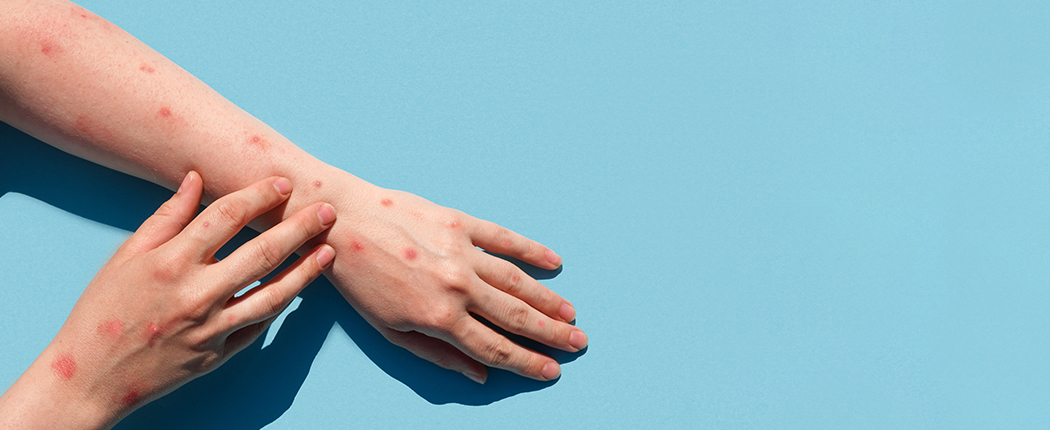To Elevate our Standard of service, availability, and patient care, we are merging some locations — learn more here!
Standard Optical can put your individual, customized prescription lens into nearly any frame for ideal performance sunglasses.
Monkeypox is not a new disease, but a recent outbreak has raised concern around the world. The virus does not spread easily: it is spread by skin-to-skin or intimate (sexual) contact. It can cause painful symptoms including a blister-like rash and flu-like symptoms which usually begin within three weeks after someone has been exposed to the virus. A person with monkeypox can spread the virus from the time they start showing symptoms until their skin has entirely healed. It is important to note that, at this time, the broader population is at low risk for infection, and overall mild symptoms have been reported during current outbreaks.
According to some recent reports, monkeypox can sometimes cause complications in the eyes.
What Is Monkeypox?
Monkeypox is a virus transmitted from animals to humans (also called a viral zoonosis). The name “monkeypox” was given to the illness because it was first discovered in monkeys, but both non-human primates and rodents can carry the disease and pass it on to humans.
Symptoms in monkeypox are similar to symptoms found in smallpox, but monkeypox symptoms have been reported to be less severe. The two illnesses are related, as monkeypox is part of the same classification as variola virus, which is the type of virus that causes smallpox. Monkeypox causes a blister-like rash on the skin that can take several weeks to disappear. Those who are infected may also experience fever, chills and other flu-like symptoms. Although monkeypox has mostly been seen in parts of Africa in the past, it has recently reached many parts of the world, including the United States.


How Monkeypox Affects the Eyes
Monkeypox may cause symptoms such as fever, headache, chills, and swollen lymph nodes, in addition to a blister-like rash. The virus may also impact the eyes in several ways. The monkeypox rash affects the face in 95% of cases. As a result, it can be present in the area around your eyes. The conjunctiva (the clear tissue that covers part of the front of the eye as well as the inner eyelid) is affected in 20% of cases, resulting in conjunctivitis (pink eye). One study found that people who reported symptoms of conjunctivitis had a higher frequency of other flu-like symptoms. Sometimes the infection can extend to the cornea, which can lead to further complications, and in rare cases, vision loss.
According to the World Health Organization (WHO), Monkeypox Can Cause:
- Conjunctivitis, due to the rash spreading to the conjunctiva (this occurs in over 20% of cases)
- Eyelid swelling (occurring in over 20% of cases)
- Light sensitivity (occurring in about 20% of cases)
- Corneal infection resulting in inflammation (keratitis) or, less commonly, corneal scarring
- Secondary corneal infection
Symptoms of Monkeypox in the Eyes
How do you know if you have monkeypox — specifically in your eyes?
Since monkeypox may cause conjunctivitis or a corneal infection, you may experience the following eye symptoms commonly associated with either condition:
- Redness
- Itching or burning
- Light sensitivity
- Watery eyes
- Eye discharge
- Pain or discomfort
- Blurred vision
- Feeling like something is stuck in your eye
Note: These are general symptoms of conjunctivitis or corneal infection and inflammation. While these symptoms may be seen in monkeypox, they do not indicate that you have monkeypox.
Contact your eye doctor immediately for proper assessment and treatment if you develop eye pain or blurred vision.
Is There a Treatment for Monkeypox?
Monkeypox does not have a cure, but it usually goes away on its own within two to four weeks. In fact, most people recover fully without needing treatment. But if a rash becomes infected, a doctor may need to prescribe antibiotics.
For those who are at risk of getting very ill from the virus, a health care provider may recommend antiviral medication as well as a post-exposure vaccine.
Currently, two vaccines are available for monkeypox. The Centers for Disease Control and Prevention (CDC) recommends vaccinations for those who have already been exposed to the virus and those at higher risk.
What to Do If You Think You Have Monkeypox
If you have been exposed to monkeypox or are having symptoms associated with monkeypox, contact your primary care provider. If you’re experiencing any symptoms in your eyes, contact your eye doctor. In addition, the following steps are recommended:
- Don’t share towels or linens with others. Both monkeypox and conjunctivitis can be spread by sharing cloth material.
- Use a new towel every time you need one.
- If you wear contact lenses, wear your backup glasses full time until symptoms subside. (If you don’t have a back-up pair of glasses, we won’t scold you….be we should. Instead, Standard Optical offers 50% off backup glasses with StanCare Plus.)
- Refrain from wearing eye makeup.
- Try using a warm or cool compress over your eyes to ease discomfort and swelling.
- If you’re experiencing pain, try an over-the-counter pain reliever.
- Don’t touch your eyes or face.
- Avoid physical contact with humans and pets.
- Wash your hands frequently with soap and water.
- Drink plenty of fluids while your symptoms are active.
Again, if you experience eye problems and have monkeypox, call your eye doctor. In order to prevent long-term effects, it’s important to treat your symptoms quickly.
Contact your health care provider immediately if you believe you have monkeypox, even if you aren’t experiencing eye-related symptoms.
If you are diagnosed with monkeypox, you’ll likely be told to isolate until your symptoms subside and your rash heals. If you are unable to isolate, wear a mask and keep your distance from others. Although monkeypox is not airborne, a mask may help prevent further spread through saliva.
The Outlook
The monkeypox outbreak has been declared a national health emergency in the United States.
Protect yourself and others by doing the following:
- Avoid sharing towels, clothes, utensils, and other personal items.
- Avoid close physical contact with others.
- Give yourself space in public places.
- Wash your hands frequently with soap and water.
Report symptoms to your doctor and tell others if you’ve been exposed and/or diagnosed with monkeypox.
To schedule an appointment with any Standard Optical Optometrist or Ophthalmologist call
385-422-EYES or WWW.STANDARDOPTICAL.NET
What People Say About Us

The staff here is amazing. We have always had a great experience and never have to wait long for our appointments. My husband and I will be coming to Standard Optical for years to come.
Brianna S.
Standard Optical is by far the least expensive place to get glasses in Utah. I have priced them all (including Costco) and it is hundreds of dollars less for an examination and two pair of glasses. Don't believe me? Then call Standard Optical first and compare their prices with anyone else.
Jerry M.

















